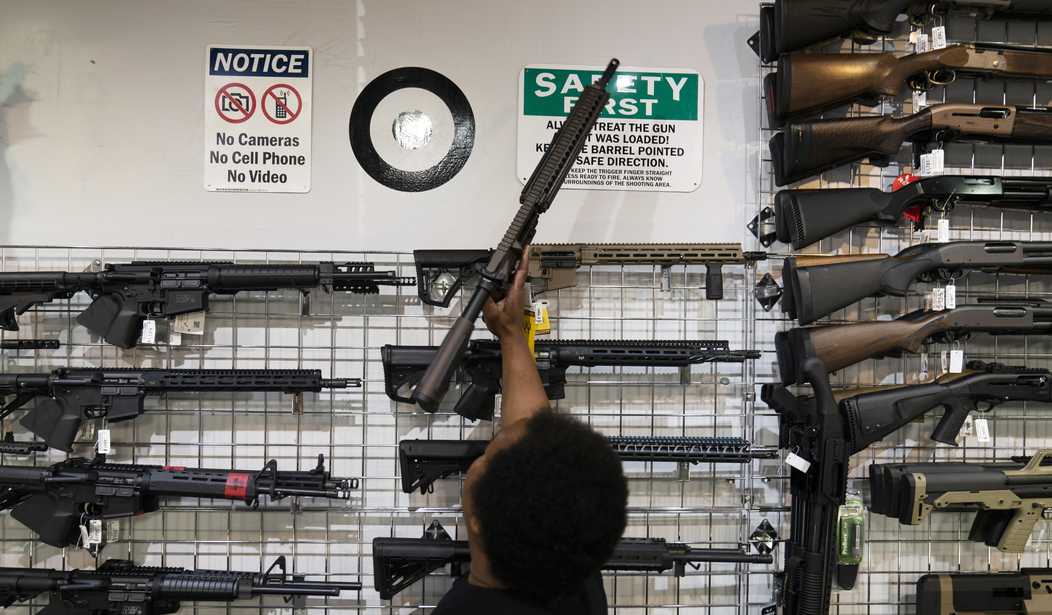New York is a state that’s been pushing gun control hard for years. Nearly a decade ago, they enacted the SAFE Act, a law that, among other things, created a registry for so-called assault weapons.
Compliance was an absolute joke, but they passed it.
Now, as the state has gotten smacked around by the Supreme Court for one bit of anti-gun legislation and is likely to get hammered over the latest nonsense, some are trying to justify gun control as much as they can.
And they do it by claiming that despite the problems with the SAFE Act, gun control has made New York safer.
But data from the Centers for Disease Control suggests New York’s tight firearms laws make the state safer, relative to most other states, when it comes to gun-related violence.
In 2020, New York had fewer gun deaths per 100,000 residents than all but four other states, and its gun death rate was 61% lower than the national average, according to Giffords Law Center to Prevent Gun Violence.
Even before adopting its latest gun laws, New York was rated sixth-best state in the country in “gun safety strength” by the Giffords Center, which supports stronger gun control laws.
At the other end of the spectrum was Mississippi, which had 28.6 gun deaths per 100,000, a rate that was 110% higher than the national average. Giffords Law rated Mississippi among the five worst in the country for gun safety strength and noted that the state loosened restrictions further in 2021 by allowing people to carry concealed firearms using a driver’s license that never expires.
New York’s strong gun regulations clearly have an impact on deterring gun crimes and violence, said Robert J. Spitzer, author of five books on gun control and gun policy, including “The Gun Dilemma: How History is Against Expanded Gun Rights,” published this month.
So, the expert they cite is an author who pushes gun control.
Yeah, no suggestion of bias there, now is there?
But what about the studies being touted? Does the data say what the report claims?
Yes, it does. There’s not really any argument as to what that data says.
The problem isn’t what the data says, but what it means.
You see, these studies are generally meaningless, as we’ve noted previously. The piece referred to there is from Reason, and it includes an interesting bit about studies:
In terms of the gun control studies deemed rigorous by RAND, this means that even if there were no relationship between gun laws and violence—much like the relationship between drinking milk and getting into car accidents—we’d nevertheless expect about five percent of the studies’ 722 tests, or 36 results, to show that gun regulations had a significant impact. But the actual papers found positive results for only 18 combinations of gun control measure and outcome (such as waiting periods and gun suicides). That’s not directly comparable to the 36 expected false positives, since some combinations had the support of multiple studies. But it’s not out of line with what we would expect if gun control measures made no difference.
Also concerning is the fact that there was only one negative result in which the researchers reported that a gun control measure seemed to lead to an increase in bad outcomes or more violence. Given the large number of studies done on this topic, there’s a high statistical likelihood that researchers would have come up with more such findings just by random chance. This indicates that researchers may have suppressed results that suggest gun control measures are not working as intended.
Most inconclusive studies also never get published, and many inconclusive results are omitted from published studies, so the rarity of pro-gun-control results and the near-total absence of anti-gun-control results is a strong argument that, based on the existing social science, we know nothing about the effects of gun control.
In other words, pretty much any anti-gun data you care to cite can actually be dismissed out of hand simply because of the strong suggestion of bias in gun research.
That means data suggesting gun control is beneficial is questionable at best.
And even if bias isn’t a factor, many of these studies are only finding a correlation, not necessarily causation. It’s difficult, if not impossible to account for things like economics and the role it plays in both crime and suicides.
For example, the median income in New York is $35,379, while Mississippi’s–the state they opted to compare New York to–is $25,261. In fact, when you rank all states and territories, New York has the 13th highest median income. Mississippi is 51st.
That typically doesn’t get accounted for in these studies, yet the link between poverty and crime is well-known.
What the SAFE Act and the rest of the state’s gun control laws manage to accomplish is simply creating burdens for law-abiding citizens to keep and bear arms. It does nothing to the criminals within the state who seek to obtain guns. Look at what we’re seeing in New York City over the last two years and try to tell me gun control works.
And the data may say otherwise, but considering how the data is obtained, stretched, adjusted, and mangled in order to make a point, it’s less than meaningless anyway.







Join the conversation as a VIP Member